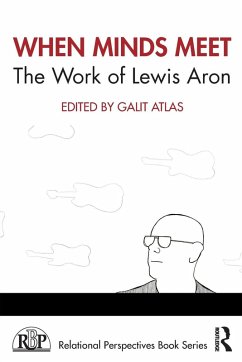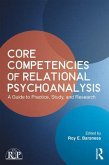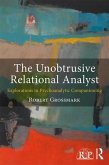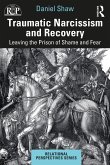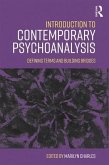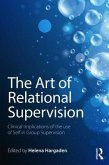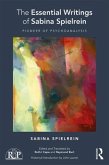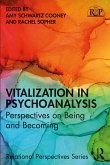When Minds Meet
The Work of Lewis Aron
Herausgeber: Atlas, Galit
When Minds Meet
The Work of Lewis Aron
Herausgeber: Atlas, Galit
- Broschiertes Buch
- Merkliste
- Auf die Merkliste
- Bewerten Bewerten
- Teilen
- Produkt teilen
- Produkterinnerung
- Produkterinnerung
This extraordinary volume offers a sampling of Lewis Aronâ s most important contributions to Relational psychoanalysis.
Andere Kunden interessierten sich auch für
![Core Competencies of Relational Psychoanalysis Core Competencies of Relational Psychoanalysis]() Core Competencies of Relational Psychoanalysis62,99 €
Core Competencies of Relational Psychoanalysis62,99 €![The Unobtrusive Relational Analyst The Unobtrusive Relational Analyst]() Robert GrossmarkThe Unobtrusive Relational Analyst36,99 €
Robert GrossmarkThe Unobtrusive Relational Analyst36,99 €![Traumatic Narcissism and Recovery Traumatic Narcissism and Recovery]() Daniel ShawTraumatic Narcissism and Recovery26,99 €
Daniel ShawTraumatic Narcissism and Recovery26,99 €![Introduction to Contemporary Psychoanalysis Introduction to Contemporary Psychoanalysis]() Introduction to Contemporary Psychoanalysis33,99 €
Introduction to Contemporary Psychoanalysis33,99 €![The Art of Relational Supervision The Art of Relational Supervision]() The Art of Relational Supervision65,99 €
The Art of Relational Supervision65,99 €![The Essential Writings of Sabina Spielrein The Essential Writings of Sabina Spielrein]() Sabina SpielreinThe Essential Writings of Sabina Spielrein58,99 €
Sabina SpielreinThe Essential Writings of Sabina Spielrein58,99 €![Vitalization in Psychoanalysis Vitalization in Psychoanalysis]() Vitalization in Psychoanalysis57,99 €
Vitalization in Psychoanalysis57,99 €-
-
-
This extraordinary volume offers a sampling of Lewis Aronâ s most important contributions to Relational psychoanalysis.
Hinweis: Dieser Artikel kann nur an eine deutsche Lieferadresse ausgeliefert werden.
Hinweis: Dieser Artikel kann nur an eine deutsche Lieferadresse ausgeliefert werden.
Produktdetails
- Produktdetails
- Relational Perspectives Book Series
- Verlag: Taylor & Francis Ltd
- Seitenzahl: 384
- Erscheinungstermin: 30. November 2020
- Englisch
- Abmessung: 234mm x 156mm x 21mm
- Gewicht: 596g
- ISBN-13: 9780367622121
- ISBN-10: 0367622122
- Artikelnr.: 60001128
- Relational Perspectives Book Series
- Verlag: Taylor & Francis Ltd
- Seitenzahl: 384
- Erscheinungstermin: 30. November 2020
- Englisch
- Abmessung: 234mm x 156mm x 21mm
- Gewicht: 596g
- ISBN-13: 9780367622121
- ISBN-10: 0367622122
- Artikelnr.: 60001128
Galit Atlas is on the faculty of the NYU Postdoctoral Program in Psychotherapy and Psychoanalysis. She is the author of The Enigma of Desire: Sex, Longing and Belonging in Psychoanalysis (Routledge, 2015) and Dramatic Dialogues (co-authored with Lewis Aron, Routledge, 2017). She is a faculty member at the Four Year Adult and National Training Programs at the National Institute for the Psychotherapies (NIP). She serves on the editorial board of Psychoanalytic Perspectives and is a psychoanalyst and clinical supervisor in private practice in New York City.
Part I. Psychoanalytic Vision 1. Dreams, Narrative, and the Psychoanalytic
Method (1989) 2. Working Toward Operational Thought: Piagetian Theory and
Psychoanalytic Method (1993) 3. The Internalized Primal Scene (1995) 4.
God's Influence on My Psychoanalytic Vision and Values (2004) Part II.
Clinical Choices and Relational Practice 5. Interpretation as Expression of
the Analyst's Subjectivity (1992) 6. The Patient's Experience of the
Analyst's Subjectivity (1991) 7. Self-Reflexivity and the Therapeutic
Action of Psychoanalysis (2000) 8. Clinical Choices and the Relational
Matrix (1999) 9. "With you I'm Born Again": Themes and Fantasies of Birth
and the Family Circumstances Surrounding Birth as These Are Mutually Evoked
in Patient and Analyst (2014) Part III. The Ethics of Clinical Practice
10. Mutual Vulnerability: An Ethic of Clinical Practice (2016) 11. Beyond
Tolerance in Psychoanalytic Communities: Reflexive Skepticism and Critical
Pluralism (2017) 12. Ethical Considerations in Psychoanalytic Writing
Revisited (2016)
Method (1989) 2. Working Toward Operational Thought: Piagetian Theory and
Psychoanalytic Method (1993) 3. The Internalized Primal Scene (1995) 4.
God's Influence on My Psychoanalytic Vision and Values (2004) Part II.
Clinical Choices and Relational Practice 5. Interpretation as Expression of
the Analyst's Subjectivity (1992) 6. The Patient's Experience of the
Analyst's Subjectivity (1991) 7. Self-Reflexivity and the Therapeutic
Action of Psychoanalysis (2000) 8. Clinical Choices and the Relational
Matrix (1999) 9. "With you I'm Born Again": Themes and Fantasies of Birth
and the Family Circumstances Surrounding Birth as These Are Mutually Evoked
in Patient and Analyst (2014) Part III. The Ethics of Clinical Practice
10. Mutual Vulnerability: An Ethic of Clinical Practice (2016) 11. Beyond
Tolerance in Psychoanalytic Communities: Reflexive Skepticism and Critical
Pluralism (2017) 12. Ethical Considerations in Psychoanalytic Writing
Revisited (2016)
Part I. Psychoanalytic Vision 1. Dreams, Narrative, and the Psychoanalytic
Method (1989) 2. Working Toward Operational Thought: Piagetian Theory and
Psychoanalytic Method (1993) 3. The Internalized Primal Scene (1995) 4.
God's Influence on My Psychoanalytic Vision and Values (2004) Part II.
Clinical Choices and Relational Practice 5. Interpretation as Expression of
the Analyst's Subjectivity (1992) 6. The Patient's Experience of the
Analyst's Subjectivity (1991) 7. Self-Reflexivity and the Therapeutic
Action of Psychoanalysis (2000) 8. Clinical Choices and the Relational
Matrix (1999) 9. "With you I'm Born Again": Themes and Fantasies of Birth
and the Family Circumstances Surrounding Birth as These Are Mutually Evoked
in Patient and Analyst (2014) Part III. The Ethics of Clinical Practice
10. Mutual Vulnerability: An Ethic of Clinical Practice (2016) 11. Beyond
Tolerance in Psychoanalytic Communities: Reflexive Skepticism and Critical
Pluralism (2017) 12. Ethical Considerations in Psychoanalytic Writing
Revisited (2016)
Method (1989) 2. Working Toward Operational Thought: Piagetian Theory and
Psychoanalytic Method (1993) 3. The Internalized Primal Scene (1995) 4.
God's Influence on My Psychoanalytic Vision and Values (2004) Part II.
Clinical Choices and Relational Practice 5. Interpretation as Expression of
the Analyst's Subjectivity (1992) 6. The Patient's Experience of the
Analyst's Subjectivity (1991) 7. Self-Reflexivity and the Therapeutic
Action of Psychoanalysis (2000) 8. Clinical Choices and the Relational
Matrix (1999) 9. "With you I'm Born Again": Themes and Fantasies of Birth
and the Family Circumstances Surrounding Birth as These Are Mutually Evoked
in Patient and Analyst (2014) Part III. The Ethics of Clinical Practice
10. Mutual Vulnerability: An Ethic of Clinical Practice (2016) 11. Beyond
Tolerance in Psychoanalytic Communities: Reflexive Skepticism and Critical
Pluralism (2017) 12. Ethical Considerations in Psychoanalytic Writing
Revisited (2016)
